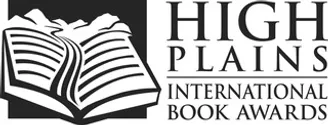Finalist Reviews
2025
Art & Photography
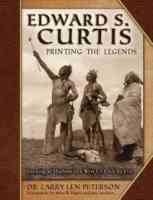
With his latest book, Edward S. Curtis, Printing the Legends: Looking at Shadows in a West Lit Only by Fire, Dr. Larry Len Peterson has produced the definitive tribute to one of the early twentieth century’s most legendary photographers.
Above all, the book, like Curtis’s photography, is beautiful. Even a quick glance reveals the stunning quality of the volume’s 250 full-color illustrations. While the majority of these images are, of course, Curtis’s, Peterson also utilizes the works of other Western-art icons—ranging from Thomas Moran and Charlie Russell to E. I. Couse and Maynard Dixon—to aid readers in visualizing the artistic milieu in which Curtis worked.
A deeper dive into Printing the Legends’s exhaustive text tells the photographer’s full story in spectacular detail. Curtis was a master of Pictorialism, a turn-of-the-twentieth-century movement that focused on mood and atmosphere in an effort to elevate photography to the status of fine art. Curtis also subscribed to the then-prevalent, although erroneous, belief that America’s Indigenous Peoples were destined to disappear. Accordingly, he devoted much of his life to creating The North American Indian, a twenty-volume, 2,200-image portfolio celebrating Native American culture from the Southwest to Canada and Alaska. Such was the impact of Curtis’s artistry that his work became synonymous with the very concept of “The Vanishing Race.”
Although Printing the Legends concentrates on Curtis, Peterson augments the photographer’s story with historical context on topics ranging from the devasting effects of federal government Indian policy to the contributions of Civil-War-photographer Mathew Brady and pioneering conservationist George Bird Grinnell.
A long-time resident of Oregon, Peterson is a native of Plentywood, Montana, and multi-award-winning author of numerous books on Western art, history, and culture, including a 2015 High Plains Book Award for Charles M. Russell: Photographing the Legend. He has also been recognized by the C. M. Russell Museum and the Montana Historical Society Board of Trustees for his numerous contributions to Montana history and culture.
Now retired, historian Kirby Lambert spent more than three-and-a-half decades working for the Montana Historical Society as registrar, curator, and education administrator.

Anyone who lives in the Northern Plains should be familiar with the stunning beadwork of its Native peoples. What they might not have noticed is that the region is currently experiencing a beading “renaissance,” as new generations take up the art and make it their own. Edited by Carmen Robertson, Judy Anderson, and Katherine Boyer, BEAD TALK: INDIGENOUS KNOWLEDGE AND AESTHETICS FROM THE FLATLANDS, a finalist in the Art & Photography category of the High Plains International Book Awards, provides context for this rebirth, correctly placing the practice in the category of fine art rather “mere” craft. It also reminds us that Native bead artists—like Native people themselves—are persistent, innovative, and diverse.
In her foreword, Métis Brenda Macdougall emphasizes the importance of the concepts of kiyokewin—visiting—and wahkotowin—or family, kinship, and relationships—to the process of beading. Indeed, the genesis of the book was a group of beaders who call themselves the Aunties Collective. The importance of beading as a communal process is evident throughout the book, from other informal groups like the Beading Babes (chapter six) to the more formal beading symposium, Ziigimineshin, in 2020 (chapter four). These communal spaces provide beaders “solace, knowledge transmission, and friendship."
Understanding beading as a communal process upends the traditional Western emphasis on art as a final product, and it gives the reader a much deeper appreciation of the book’s photography. As Carmen Robertson points out in her essay "Visiting Kin" (chapter seven), “Objectifying art through a Western lens values stasis and possession. . . . However, such appreciation . . . tends to shut down understandings of art made by Indigenous Peoples that centres expansive ways of knowing rooted in relationality."
With stunning photography and a mix of conversational oral histories to more traditional academic essays, BEAD TALK is an excellent addition to the libraries of Western historians, material culturists, or anyone who simply loves beautiful things. As Franchesca Hebert-Spence says in chapter four, “beading is love,” and that love—for beading, for friends, for community, and for home—pours from the pages.
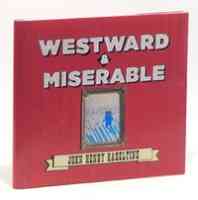
Readers will be in for a wild and wonderful journey when they pick up John Henry Haseltine’s Westward & Miserable, a finalist for the High Plains International Book Award in the Art & Photography category. The paintings accompanying each story are a marvelous excursion into a fantasized Western America, with the stories showcasing Mr. Haseltine’s sense of humor. There are bold colors, a recurring backdrop of mountains, ever-changing sky colorations and, of course, the bug-eyed wonderment of each individual.
The gonzo writing reminds me of the late Hunter S. Thompson and will surely put smiles on the faces of readers of this alternative Western saga. One of the peculiarities of Mr. Haseltine’s paintings is how often an object or image shows up thirteen times. Be it birds, birch trees, crosses, or buffalo, they are all a part of the story. Coincidentally, I counted thirteen paintings which held thirteen of the same image. A David Lynch soundtrack would be terrific background music when reading this book.
As readers join Mr. Hazeltine in his alternative take on the West, keep an eye out for a David Bowie cameo appearance. Join the party and take the ride – you won’t be disappointed.
Big Sky Award
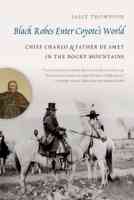
In her work BLACK ROBES ENTER COYOTE’S WORLD, a nonfiction and Big Sky Award finalist in this year’s High Plains International Book Awards, anthropologist Dr. Sally Thompson works to correct an imbalance in storytelling perspectives that has plagued historical literature of the West. Effective history is more than a record of people, dates, and events, but represents the lived experience. Dr. Thomspon accomplishes this through first-hand accounts and extensive research of the Salish people of the Bitterroot Valley in western Montana, and the Jesuit missionaries sent to convert them in the mid-to-late 19th century.
Each culture came to this encounter with a different set of axioms, one with fundamental assumptions of humanity’s dominion over nature, the other with a mandate to live in harmony and equilibrium with their natural surroundings. Thompson explores mankind’s relationship to the land through meticulous analysis of the oral history of the Salish leader, Chief Charlo, and the journals of Father Pierre-Jean De Smet, adding a unique strand to the research of this topic with her focus on the intersection of environment and culture. This clash of traditions was a tragedy for the Salish people, and Thompson’s analysis asks question of the powers and peoples that displaced them. “Wisdom resides in ancient places and can be gleaned from this story of braided cultural streams that merged — for a time — at the Place of Wild Cottonwoods in the Bitterroot Valley.”
Thompson details what can be gleaned from this tragedy and what lessons it has for today as humanity’s relationship to the land continues to evolve and decay. She is well-positioned to write this narrative. Since receiving her anthropology doctorate from the University of Colorado in 1980, Thompson has spent most of her career consulting and collaborating with Native communities, especially the Blackfeet Tribe and the Confederated Salish & Kootenai Tribes of northwestern Montana, and a previous book, PEOPLE BEFORE THE PARK, delves into the history of the area’s people before Glacier National Park was established. Hopefully professors teaching the history of the West are paying attention and adding this latest book to their lists of suggested reading.
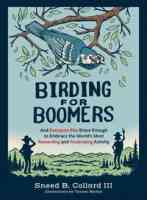
Are you bird-curious but feel intimidated by thick field guides and other ornithological tomes? Never fear, Birding for Boomv, by award-winning author Sneed B. Collard III, is just the book for you. It is a delightful, accessible, and wonderfully instructive guide for novice birders as well as a finalist for the High Plains International Book Award for Nonfiction. Collard packs this little book with loads of useful information, explaining how to get started, what gear and tools you will need, and where you can go for a great experience. Good news for homebodies—you don’t even need to leave your own backyards if you don’t want to!
Keeping it lighthearted, Collard sweetens every page with his signature sense of humor. He also takes special care to show how birding can be accessible for those dealing with physical limitations. Hearing loss, eyesight issues, or just a “broken-down boomer bod” needn’t discourage potential enthusiasts. He wants his readers to know that birding can be a joyful activity for people of any age.
Although this book is ideal for the beginning birder, Collard wisely suspects that once you’re hooked, you’ll want to go to the next level, so he includes a section on building an “Advanced Birding Arsenal.” Here you’ll learn more about pricey spotting scopes, sophisticated ornithological Websites, and even the allure of bird photography. Happily, this book is not only informative but also eye-catching. Tanner Barkin’s whimsical illustrations bring delight to every page. Birding for Boomers is a handy, exuberant, good-humored introduction to the wonderful world of bird watching.
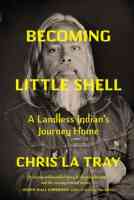
BECOMING LITTLE SHELL: A LANDLESS INDIAN'S JOURNEY HOME has received many awards and is a finalist for the 2025 High Plains International Book Award in the Indigenous Writer category. Author Chris La Tray is a descendent of the Pembina Band of the Red River of the North and is now an enrolled member of the Little Shell Tribe of Chippewa Indians in Montana. A poet and storyteller, he has authored several books of poems and essays. He was Montana Poet Laureate for 2023–2025. This book is a detailed account of La Tray's search for his family origins. It involves a personal and social journey with travels, reading, and conversations with many authors, historians, contemporaries, elders, and activists.
Like many American youths, La Tray was interested in Indians and wanted to be one. As early as four years of age, he identified as Chippewa because his “grandmother said so.” In contrast, his father and grandfather denied Indian heritage. When he was 29, he attended his grandfather’s funeral, and in attendance were Indigenous relatives whom he had never met. La Tray embarked on a journey into the history of his family and of the Little Shell Chippewa Cree. He read books by what he terms “settler writers,” Indigenous writers including James Welch, Sherman Alexie, and Vine Deloria, and he references Indigenous television shows he watched. He traveled widely in the United States West and Midwest, including many Montana communities, as well as British Columbia. He encountered individuals of Little Shell ancestry, many his contemporaries. Gradually, he embraced his identity and eventually sought enrollment with the Little Shell Tribe.
In addition to autobiography, his ultimate focus is on the Little Shell Tribe of Chippewa. Known as “landless” Indians, they are concentrated around Great Falls, although many live throughout Montana. How they became “landless” (having no reservation) is a complex historical scenario, including a long struggle for federal recognition. Along the way, La Tray explores the history of U. S. Government policies toward Indigenous communities, colonialism, effects of treaties made and broken, dispossession of land and recognition, native blood quantum laws, racism, tribal membership enrollment, and contemporary reconnection with communities. He tells stories of the leader Little Shell, Indian women in the fur trade and the current issue of MMIW (Missing and Murdered Indigenous Women), the Hellgate Treaty of 1855, First Peoples Buffalo Jump, celebrations often called powwows, the official recognition of the Little Shell Tribe by the State of Montana in 2009, and Federal recognition status in 2019.
BECOMING LITTLE SHELL is a wonderfully complex, if somewhat rambling, memoir of “repatriation” with family and tribe, with many levels. It is a “must read” for anyone interested in a personal journey in the context of the complex history and current issues of all Indians, and especially the Little Shell Tribe of Chippewa Indians in Montana. The author concludes: “I have a responsibility to make sure all the stories related to this struggle are told.” His final sentence is: “And I am Little Shell.”
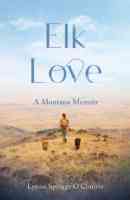
Elk Love: A Montana memoir, a memoir/creative nonfiction finalist written by Lynne Spriggs O’Connor, is a love story, and to quote Pam Houston, “It is impossible to tell whether the real object of desire is the man, the mountain he lives on or the elk that stands on that mountain and bugles to his mate.” It is well written, and I must confess I approached it with a certain hesitation, as I am not usually drawn to romantic sentimentality. In plainspeak, though, it is not sappy. Rather, it is about two people, each carrying their own heartache who lean into the land, the animals (both wild and domestic), and, finally, each other.
O'Connor is a museum professional, an Easterner who spent numerous summers on the Blackfeet reservation doing research. But summer visits do not a native make. The wilderness was still “out there.” Then she moved west following a life-altering condition. Spoiler alert: it resolves but eliminates any hope of pregnancy. The following passage best describes her new life: “On weekdays, I dress in a skirt and blouse, drive five minutes to the museum in Great Falls where I spend long days researching and organizing Native American works of art for a bison exhibit. On weekends, I check road conditions, dress in muck boots and a Carhartt jacket.”
What I appreciated most was the pacing. The book follows the seasons of ranching, the cycle of wildlife, all of which contribute deeply to the evolving relationship at the story's core. There is no sense of rushing. It is more about discovery. She learns to accept the harshness of the land and the realities of husbandry to slaughter. He is slow to trust his feelings, mourning a deceased wife who in memory becomes more. The story is less about the two of them and more about finding her place in his world.
For my personal reading experience, she mentions interesting people she has met, some of whom I knew from my own museum career. The late George Horse Capture was a mentor to her and to me. Quite apart from my personal connection to people mentioned, though, I recommend the book for its descriptive narrative. Once into it, I wanted to go there.
Children’s Middle Grade Book
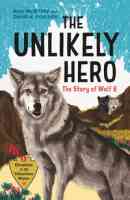
Humans of all ages find animals endlessly fascinating, and this is especially true for our fellow mammals. In THE UNLIKELY HERO: THE STORY OF WOLF 8, renowned wolf biologist Rick McIntyre and middle-grade author David A. Poulsen have crafted a particularly compelling narrative about a specific mammal in one of the most iconic landscapes in North America: Yellowstone National Park. This finalist for the Youth/Middle Grade category of the High Plains International Book Awards adapts McIntyre's award-winning book for adults about Wolf 8, blending Poulsen's age-appropriate storytelling with specific anecdotes from McIntyre's field research.
As in the book for adults, THE UNLIKELY HERO begins with an explanation of wolf reintroduction to Yellowstone, focusing on Wolf 8's journey with his family south from Canada, and it is a credit to the authors that they do not shy away from discussing the controversy. They rightly trust young readers to be able to understand multiple viewpoints. However, as the subtitle indicates, most of the book is dedicated to Wolf 8's specific story, told in the personalized style that is emblematic of McIntyre's work.
McIntyre has always eschewed the dry distance of many biologists studying nonhuman animals, and in his descriptions of Wolf 8, it is easy to accept his argument that wolves communicate emotions just as we understand our household pets do. As the story unfolds, we watch as Wolf 8 transitions from runt to alpha male after adopting a family of fatherless pups. We cheer him on as he protects both his mate and her pups, whether they are biologically connected to him or not. Since wolves do not live as long as humans, we get Wolf 8's entire life cycle, and it is worth having a conversation about that to prepare more sensitive young readers for the end.
McIntyre's book for adults about Wolf 8 is the first in a series about Yellowstone's wolves, and I hope the plan is to adapt all of them for young readers. The characters in this family saga are no less enthralling because they are wolves, and the target age group always wants captivating nonfiction. Hopefully middle school librarians everywhere are paying attention.
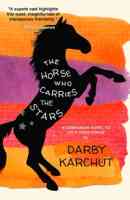
THE HORSE WHO CARRIES THE STARS by Darby Karchut, a finalist in the youth/middle grade category of the High Plains International Book Awards, is a perfect book for animal lovers. As the mother of an animal-loving daughter, I would have absolutely purchased a copy of this delightful book for her when she was a child. Just as the protagonist feels connected to and deeply loves her horse, my daughter felt connected to and deeply loved her tiny chihuahua. Reece, the endearing main character, perfectly illustrates the power of a silent companion - showing just how meaningful and transformative the relationship between a child and an animal can be. For a child who feels anxious or struggles to belong, a close connection with a pet can offer a comfort and a joy that can be hard to find.
THE HORSE WHO CARRIES THE STARS reminded me of this truth. It’s the kind of story that feels steady and affirming, even when it explores big emotions like fear, loneliness, and change. There’s a quiet comfort in the relationship between Reece and her horse - a connection that heals, even as she rides atop a wild spirit. That juxtaposition holds an important life lesson: strength and softness can and often do coexist.
Reading this book as an adult, I found myself thinking about how healing stories like this can be. Reece reminded me so much of my daughter at that age: sensitive, strong, deeply connected to animals, and trying to make sense of emotions too big for words. Hearing part of the story from Carries the Stars’s perspective added a richness that made the experience feel even fuller and more meaningful.
I believe every child who has ever loved an animal will feel something special when reading this book. It’s the kind of story a child reads once when they’re young - and then, years later, rediscovers it, remembering exactly how accepted it made them feel. Stories like this help children feel seen and understood, and that always matters.
The book has a steady, thoughtful pace and never rushes the reader. In fact, the only adjustment I’d love to see is a bit more time devoted to “after the fire," given the importance of healing as a theme.
I highly recommend it for middle-grade readers, especially the quiet thinkers, the anxious minds, the animal lovers, and anyone who has ever needed a little light in the sometimes dark moments. Thank you, Darby Karchut, for entering your beautiful book in the High Plains International Book Awards!
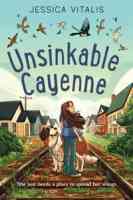
What does poverty look and feel like? In UNSINKABLE CAYENNE, a finalist for the middle grade category of the High Plains International Book Awards, author Jessica Vitalis takes a thoughtful and compassionate approach to answering that question for young readers. Writing in verse, Vitalis introduces a compelling protagonist in Cayenne and illustrates how the all-too-relatable struggles of middle school are exacerbated by her family’s marginal socioeconomic status.
After living the whole of her life living in her parents’ van, Cayenne is elated to hear that her father has taken a permanent job and, starting soon, she will be enrolled in school for the first time! To live in a house, start middle school, and make friends…the move to Montana seems a dream come true for Cayenne. And yet, the harder she tries to make friends and fit in, the more the differences between Cayenne’s life and her classmates’ lives start to stand out. Like the chickens in Cayenne’s front yard, the stitched-up holes in her shoes, or that her house is on the wrong side of town – all details that Vitalis sketches in compelling verse, with chapters varying in form. All of this is set against the backdrop of Cayenne’s parents’ financial struggles and the strain that would put on any family, something that will feel familiar to many young readers. Feeling shame and wanting to be like everyone else, Cayenne starts distancing herself from her family and the life she previously had known. But the more she tries to change herself, the unhappier she becomes.
The author of several novels for middle-grade readers, Vitalis is adept at helping young readers wrestle with challenging subjects. Many will appreciate not only seeing their own situations in her novels but also grasping a better understanding of their peers. In a world where many times our self-worth is correlated with a dollar value, UNSINKABLE CAYENNE is a lesson in how our intrinsic worth is of infinite value, an important reminder no matter how old the reader is. Libraries everywhere should carry it!
Children’s Picture Book
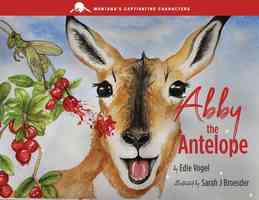
The story of Abby the Antelope, a children's picture book finalist for the High Plains International Book Awards by Edie Vogel with illustrations by Sarah J. Broesder, is relatable for any child. As Abby seeks to find her uniqueness in a herd of identical antelope, she tries different ways to stand out and realizes that it isn’t easy.
The life lessons that children can learn are numerous, as each attempt will be familiar to kids, and the struggle with wanting to stand out while remaining in peer groups is one that even adults often have. Vogel explores in simple scenarios with whimsical art by Broesder how belonging and individuality are not mutually exclusive. Differences are not always outward but sometimes are more on the inside, and what is important is that we accept who we are and strive to be the best version of ourselves.
I am excited to give this book to my granddaughter. As she learns to traverse this world, this book will illustrate great lessons for her. Never take yourself for granted. Be yourself even if you feel ordinary. Don’t be afraid to try new things. Take risks, be adventurous. Love who you are, and love who you are with. Even adults could learn a thing or two from Abby!
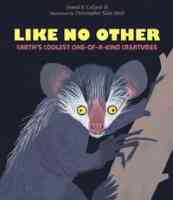
LIKE NO OTHER: EARTH'S COOLEST ONE-OF-A-KIND CREATURES, a finalist in the Children's Picture Book category of the High Plains International Book Awards, is a fascinating look into the animal kingdom. This fun, educational book by Sneed B. Collard III and illustrated by Christopher Silas Neal is not just for kids, either. From the secretarybird (spoiler alert: it's not a secretary!) to the purple frog (not fully catalogued until 2003!), the book covers a broad range of unique animals, with Neal's beautiful illustrations adding depth to the adventure.
LIKE NO OTHER is packed with great information, but it also suggest hands-on opportunities with science activities. This makes the book not only a fun read for kids but also an opportunity for families to connect over shared projects. Exploring and learning together is sure to fill up that core memory bank for the young and old alike.
I am looking forward to gifting this to my son and his family, as I know it will be a blessing to them. Picturing my son teaching and learning alongside his son brings me great joy! Even if you don't have children in your life, this book is also a great addition to your coffee table. The interesting conversations it will spawn at gatherings is sure to enhance the entertainment!
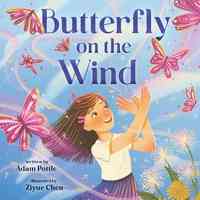
Butterfly on the Wind by Adam Pottle and illustrated by Ziyue Chen is a Children's Picture Book finalist for this year's High Plains International Book Awards. The story begins with a relatable emotion for most young readers: anxiety. Kids who have been asked to participate in classroom story times, skits, or talent shows will immediately feel a connection with Aurora as she struggles to rehearse the story she wants to share at her talent show. They will sympathize as, frustrated with her own stuttering, Aurora turns longingly to the butterflies in her garden and wishes that her own life could be so simple or that she could escape her own worries by flying away.
While speaking in public is a fairly widespread fear, Aurora's challenge is complicated by the fact that she is deaf and speaks in a language many people do not understand: sign language. With a vibrant art style and clear, direct sentences, Butterfly on the Wind shows young readers and their adult reading partners that we can communicate with our hands just like we can communicate with our voices. In a collection of vignettes spanning the ocean, the book illustrates a world where those who are deaf and hard-of-hearing always have someone to talk with: those who also know sign language.
In a world where too many deaf children are denied not only the chance to fully learn sign language but also the crucial sense of connection and support of a community who shares their language, deaf representation in children's literature is critical. Both the author and the illustrator are deaf, and together they have presented a story that creates strong incentives for all of us, not just those who are deaf, to learn sign language.
Creative Nonfiction
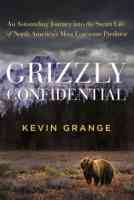
In GRIZZLY CONFIDENTIAL, a 2025 High Plains International Book Awards finalist in the memoir/creative nonfiction category, author Kevin Grange takes readers on his odyssey to understand the fearsome grizzly (known to most of hte world as brown bears) and to learn what is necessary for brown bears and humans to coexist successfully. Grange talks to experts in bear research centers in Washington state and Alaska, and interesting facts abound.
For instance, bears are not interested in devouring humans. Their imperative on emerging from hibernation is to eat enough (a year's worth of calories in roughly 6 months) to survive the next hibernation. Because of this constrained timeframe, grizzlies - who are very intelligent - are always "analyzing the energy cost vs. caloric gain" in everything they do. In this calculation, it's critical that humans not be considered a source of food. If humans are strict about securing attractants (i.e., anything with a scent, including gum and lip balm) on the trail and around their homes, bears will continue to source wild food. "Predictable behavior in humans will result in predicatble behavior in brown bears." This is clearly apparent in Grange's thrilling experience at the McNeil Sanctuary in Alaska, where 100 percent control of human behavior over its fifty-year existence has resulted in coexistence with a huge concentration of wild grizzlies.
There are lots of fun asides, as when Grange and his wife Meaghan visit the Katmai National Park and Preserve in Alaska and observe the varying personalities of the brown bears in their "dance of dominance" as they line up at the salmon run during Fat Bear Week. (Fat Bear Week is officially September 23-30 this year.) Another fun encounter comes when Grange visits Doug and Lynne Seus, famed bear trainers, and is introduced to HoneyBump, whom Doug and Lynne trained to star with Brad Pitt in Growing Up Grizzly. It turns out bears can be very talented actors!
Taken together with Grange's research, these anecdotes show a way for humans and bears to share our world. Readers can thank Kevin Grange for laying out the parameters of providing the "predictability" that ensures a working balance between the safety of wild bears and the safety of human beings.
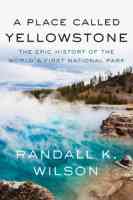
A Place Called Yellowstone: The Epic History of the World's First national Park by Randall K. Wilson is a finalist for the 2025 High Plains International Book Awards in the Creative Nonfiction/Memoir category. The author is Professor of Environmental Studies at Gettysburg College, and, as the title suggests, this book is about the history of Yellowstone National Park, the first U. S. National Park, established by U. S. Congress in 1872. Yellowstone has been called Wonderland, America’s Serengeti, the crown jewel of the National Park System, America’s best idea, and a symbol of our country. So writes the author as he introduces the book. George Catlin proposed a park based on his 1830s travels in the region of Wyoming and Montana. His hope was “A nation’s Park, containing man and beast, in all the wild and freshness of their nature’s beauty.” While the author doesn't mention Catlin's proposal, this book is a well-written and detailed account of the history and development of the 2.2 million-acre Yellowstone National Park and surrounding region, and how it relates to the larger story of the American nation.
It is both environmental and human history, beginning with geologic events including the eruption of the Yellowstone supervolcano 2.1 million years ago, and then following with accounts of Paleo Indians 13,000 years ago, early use by Native American tribes, arrival of Europeans, individual exploits, and explorations. Some of the often-told stories are not new to most readers of Montana history, including, for instance, John Colter’s run from Blackfeet warriors. There is excellent discussion about early non-Indigenous explorations of the Yellowstone Valley that includes those by Hayden, Washburn, Raynolds, and others. However, there is no reference to what guides, including Colter, Bridger, and Meldrum, learned about the area from the Crow (Apsáalooke). Local, regional, and national politics and personalities are discussed in detail, including the bureaucratic goals and blunders of YNP and NPS supervisors including N. P. Langford, P. W. Norris, and Stephen Mather.
Other topics include Native American land dispossession, land rights disputes, tensions between commercialism including tourism, and wildlife management including feeding bears by tourists, wolf reintroduction, and brucellosis. Wilson also discusses advertising that helped promote the Park. This includes references to paintings and photographs by William Henry Jackson, Thomas Moran, and official Park photographer F. J. Haynes, although there is no reference to the popular photographic postcards by Haynes. William Clark's 1814 map, other contemporary maps, and photographs of Native Americans who used the Park would have been good additions. The Nez Perce path through Yellowstone Park is indistinct on the map of the 1877 trail.
The last chapter discusses how scientific research in Yellowstone has contributed to discoveries related to COVID-19, DNA, climate change, sustainable ecology, and the balance of nature preservation with recreational tourism and commercial development. The author also mentions the recent Intertribal Bison Cooperative and Buffalo field campaign, Indigenous events in the Park, and the concept of co-managing Yellowstone by the National Park Service and Indigenous peoples. Wilson finishes with the central question: “Yellowstone for whom?” Despite the occasional omissions mentioned above, this book is a good read for anyone interested in the complex history and current issues of Yellowstone National Park.

Elk Love: A Montana memoir, a memoir/creative nonfiction finalist written by Lynne Spriggs O’Connor, is a love story, and to quote Pam Houston, “It is impossible to tell whether the real object of desire is the man, the mountain he lives on or the elk that stands on that mountain and bugles to his mate.” It is well written, and I must confess I approached it with a certain hesitation, as I am not usually drawn to romantic sentimentality. In plainspeak, though, it is not sappy. Rather, it is about two people, each carrying their own heartache who lean into the land, the animals (both wild and domestic), and, finally, each other.
O'Connor is a museum professional, an Easterner who spent numerous summers on the Blackfeet reservation doing research. But summer visits do not a native make. The wilderness was still “out there.” Then she moved west following a life-altering condition. Spoiler alert: it resolves but eliminates any hope of pregnancy. The following passage best describes her new life: “On weekdays, I dress in a skirt and blouse, drive five minutes to the museum in Great Falls where I spend long days researching and organizing Native American works of art for a bison exhibit. On weekends, I check road conditions, dress in muck boots and a Carhartt jacket.”
What I appreciated most was the pacing. The book follows the seasons of ranching, the cycle of wildlife, all of which contribute deeply to the evolving relationship at the story's core. There is no sense of rushing. It is more about discovery. She learns to accept the harshness of the land and the realities of husbandry to slaughter. He is slow to trust his feelings, mourning a deceased wife who in memory becomes more. The story is less about the two of them and more about finding her place in his world.
For my personal reading experience, she mentions interesting people she has met, some of whom I knew from my own museum career. The late George Horse Capture was a mentor to her and to me. Quite apart from my personal connection to people mentioned, though, I recommend the book for its descriptive narrative. Once into it, I wanted to go there.
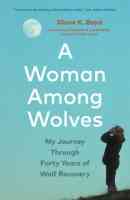
A Woman Among Wolves: My Journey Through Forty Years of Wolf Recovery by Diane K. Boyd is a finalist for the High Plains International Book Award in Memoir/Creative Nonfiction. As its subtitle establishes, the book chronicles the author’s forty years working with wild wolves in Montana. Boyd’s field study focuses not on the reintroduced Yellowstone population, but rather on wolves naturally dispersing into and around Glacier National Park. She has been tracking, trapping, and monitoring these animals for as long as they’ve been present in the region. Boyd’s memoir combines first-hand field research with outdoor adventure; fittingly, the foreword is by Douglas Chadwick, arguably Montana’s leading contemporary practitioner of this sort of science-based storytelling. Chadwick is not the only notable endorsing the book; in addition to praise from wolf biographers Nate Blakeslee and Rick McIntyre, a front-cover blurb is provided by no less a luminary than Jane Goodall.
The book proves worthy of such support. Readers accompany Boyd as she treks through snow and across rivers, following wolf tracks and the “pings” of radio collars. Chapters are devoted to individual wolves such as Kishinena, who blazed a canine trail from Canada into Montana in the late 1970s. Boyd always retains a scientist’s devotion to facts, but, like McIntyre, she presents the wolves as individuals with their own personalities and life stories. Boyd introduces an array of scientific colleagues, backcountry pilots, and friends, but also a few politicians and outfitters who are not pleased with the new animal in the forest or comfortable with the presence of a woman in a male-dominated field. In addition to such human obstacles, she is confronted by storms, grizzlies, and even an unhappy mountain lion inadvertently caught in one of her research traps. Encompassing decades of hard-earned experience in sure-handed prose, A Woman Among Wolves infuses a venerable subgenre with timely commentary and hard-earned wisdom.
Fiction
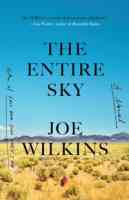
A finalist in the Fiction category of the High Plains International Book Awards, Joe Wilkins’ second novel The Entire Sky offers its readers a rich, unsettling narrative stretching from an underpass in Seattle to the plains of Montana. Rejected by his mother in the city, then bullied and beaten by his uncle in logging country, Justin finds himself homeless at sixteen, on the road with his guitar and little else—certainly without much sense of direction. His journey east ends at a sheep ranch in Delphia, Montana, where the aging owner, Rene Bouchard, has recently been widowed.
Justin and the lonely grieving Rene develop a bond that seems more familial than the relationships Rene had with his wife and grown children. In a pleasant irony, the homeless boy inspires a fresh bond between Rene and his one adult daughter Lianne. Growing more sensitive like a father, Rene teaches Justin when and how to help a sheep give birth to three lambs, including a runt. But nothing new is as good as it seems. The uninitiated Justin later soberingly learns that all three of the lambs, of course, are destined for the slaughter. So, too, an image of an unmaternal world revisits Justin in an encounter with a sheep who will not suckle her newborn.
As a “history” of sorts, the narrative alternates between the dominant present (“APRIL 1994”) and various scenes of the past (“BEFORE”), leaving the reader a great deal of past and present to piece together. The alternating time frames reinforce the novel’s abiding premise of a past still present and dynamic, for better and for worse. To some extent, the narrative’s temporal shifts dissolve the boundary between memory and experience while retaining the unpleasant suggestion that memory looms as the experience we cannot resolve.Although perhaps too wary of optimism for some readers, this novel will appeal to many for its principal characters in the process of redefining themselves, and for its quiet, “undisclosed” conclusion at which the reader is left to conjecture on the author’s “ellipsis” . . .

Not the Killing Kind by Maria Kelson is a phenomenal story about a single mother pulling out all the stops to clear her adopted son's name after he is accused of murder. Boots Marez runs a school that helps undocumented migrants and their families in Northern California. Her son is a high school senior and gets mixed up with some dangerous people. One of his closest friends is killed, and he gets arrested for the crime. Boots then goes on a mission to locate the true killer to clear her son. Along the way she encounters many dark secrets and harrowing pasts in the town whose citizens she has dedicated herself to helping for so many years.
Kelson’s writing gives us well-thought-out plotting and metaphors we didn’t know we needed. Her exploration of Boots’s emotional range and depth is exquisite. Pushing the boundaries of race, culture, and social status, the author has provided us with an insight into the lives of single mothers of different backgrounds and the struggles they face. Kelson adds another layer by including the roller coaster that adoption can be.
Kelson’s description is evocative, linking character and setting, as when she describes Humboldt County as "a great place to lie. The geography of the place supports it, a land full of trickery." Boots then reveals that even after two decades of residence, she only fits in after she makes false statements to gain the information she needs for her mission.
For a debut thriller, Not the Killing Kind sets the bar very high. I look forward to reading what Maria Kelson offers next.

ARROYO CIRCLE by JoeAnn Hart is a fiction finalist in this year's High Plains International Book Awards and is one of the small but growing crop of full-length books incorporating the pandemic. Set in the months before and then immediately following the arrival of COVID-19, Hart’s third novel follows Shelley, a woman whose life is “held together with spit and string,” and Les, a man who has chosen to be unhoused for reasons that unfold over the course of the narrative. The juxtaposition of these two very different people is the heart of the book, and Hart masterfully charts the arc of their relationship, from one of mere geographical proximity to something more philosophically meaningful.
Much of Hart’s work has an environmental thrust, and wildfires motivate major plot points in this book. The ever-present, fire-season smoke sets the novel’s tone almost from the first page, and fire itself is integral not only as a metaphor but also as a literal force driving the narrative arc and emphasizing one of the secondary themes about homelessness. Hart is a sensitive writer, which is most evident in her treatment of this issue. She treats it with nuance often missing from broad discussions of the topic, and the book is worth reading just for that.
While memories of the pandemic might still be too fresh for some readers, choosing it as the backdrop allows Hart to explore the American precariat more holistically, with a setting that emphasizes how structural forces affect individual choices (or the lack thereof). The characters are navigating their place in different systems - social, economic, environmental, political - the ones they chose and the ones that just happened to them. Consequently, ARROYO CIRCLE is likely to appeal to a broader set of readers, and this reviewer looks forward to the author’s future work.
First Book
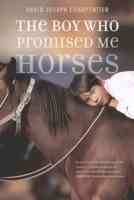
The Boy Who Promised Me Horses, a finalist in the Memoir/Creative Nonfiction category, is a warm but sad account of author David Charpentier’s friendship with 9-year-old Maurice Prairie Chief in Ashland, Montana. It is perhaps as much of a story of Dave’s personal experiences as a young high school teacher at St. Labre’s Indian Catholic School as a sweet remembrance of Mo’s brief life. Dave was forever impacted by his unexpected closeness to this charming Northern Cheyenne boy who offered him open acceptance and introduced him to his tribe, his family and his amazing physical surroundings.
Mo literally bounced into Dave’s life as he moved into The Village at St. Labre’s to begin his commitment (perhaps one year?) to teach English on the reservation. A recent Minnesota graduate from St. John’s University he was unaware of the draw he would have to this perceived desolate piece of Eastern Montana.Mo and his cousin Junior dropped by on bicycle three days after Dave arrived in Montana. They offered help in his moving in and within days were persuading Dave to fish and explore with them. “Okay. Teacher Dave from Minnesota, what do you want me to carry?” “Hey teacher Dave…wanna try fishing?” “Hey Dave! We should check out Fisher’s Butte sometime.”A close friendship developed between Dave and Maurice despite their difference in age and backgrounds. Fishing, biking, hiking and street Wiffleball games joined the two. Mo’s grandmother was the one stable adult in his life but she was also the main caregiver to his siblings and cousins (cuss-ins) and accomplished all of this from a chair at the kitchen table.
Dave did not use his position at the Catholic school to attempt to “convert” his students but asked them to be respectful of beliefs of the white man at mandatory Mass as he was of theirs during his engagement in powwows and sweats. Dave’s one year in Ashland turned into four and he has never lost his close connection with those he met there. He continues to advocate for many Indian kids who to enhance their access to premium education and other opportunities.
Dave’s story does not end with Maurice Prairie Chief’s tragic death at the age of 17 as he and a friend were trying to outrun a train at midnight. Mo’s story is the everyday story of the many challenges families on the reservations face…stories of love, caring, loss and grief. David (Sharp) Charpentier continues his relationship with the Cheyenne community he so amazingly embraced many years ago. He is currently the director of St. Labre Indian School’s Alumni Support Program and with this memoir continues to broaden the understanding of the joys and struggles of those living in our nation’s reservation communities like Ashland, Montana.This is at once a delightful read about unlikely friendship and caring as well as a sad commentary on issues many Montanans still do not acknowledge. In this book we experience first-hand the realities that poverty and prejudice have created for all of us.
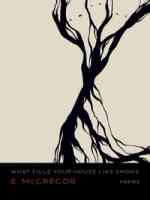
E. McGregor’s debut poetry collection What Fills Your House Like Smoke, a First Book finalist for the High Plains International Book Awards, boasts the narrative poise, trenchant wit, and prosodic variety of a mid- or late-career work. The person around whom these poems constellate is the poet’s late grandmother—a Métis woman who acquires “a fur collar, a third baby, two divorces” from one lover and “a plastic hospital bracelet with her name and birthdate on it” from another. McGregor’s deep interest in and fraught relationship with ethnicity generate tremendous heat; nowhere is this heat more incandescent, perhaps, than the opening strophes of “Weeds”:
Don’t judge me too harshly
for not understanding the small things
that come with your blood
this whole world is *lled with white
people talking, I can’t help but be one
even though I’m trying
they have me by the roots
it’s confusing having so many
seeds penetrate my skull
as if my brain was a fertile pot
but then I suppose something in me ought
to be; my womb
dried up and unused like an ornamental crab-
apple.
The synthesis of legal, horticultural, and maternal images here is brilliant. McGregor requests clemency not because whiteness is innocent but because whiteness is ineradicable: she describes it as an invasive plant denying native plants adequate light, water, habitat. The refusal of motherhood in such circumstances seems both a personal choice and a political imperative. That she apostrophizes herself as a child (“Learning to Count”), an adolescent (“Advice to my seventeen-year-old self”), and an adult (“Instructions for the Death of a Grandmother”) suggests her key questions may be questions of address: Whom do I speak to, for, about? Which voices has the world at large muted? Which amplified? What are the uses of and problems with silence? The collection’s coda, “Bodies,” finds McGregor trading the company of her sick grandmother for the company of lubricious strangers:
During the nights, free from the hospital, this body poisons itself so that not-good men will be liberated to express their desire for it. Not-good men grab at it, prod it, squeeze it. A not-good hand slips up this body’s skirt at a party, in front of not-good eyes that see and not-good mouths that laugh. This poisoned body sits on not-good laps, considers not-good options.
This litany of sinister people (“not-good men”), organs (“not-good eyes”), seats (“not-good laps”), and abstractions (“not-good options”) counterpoints the peace found elsewhere in the poem—every elegy, as McGregor knows, being less about an empty house and more about those things rapping on the casements and roosting under the eaves. McGregor has written a beautiful book that explores the distinction between grieving and being aggrieved. May she write her next one as soon as possible.
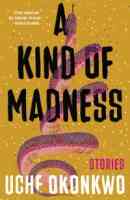
A KIND OF MADNESS, a collection of ten powerful short stories by Uche Okonkwo and a finalist in the First Book category of the High Plains International Book Awards, should not (cannot) be read in one setting. This reviewer encourages the reader to savor each one. Published by Tin House in 2024, Okonkwo’s stories deserve time, attention, and reflection. The author, whose work has been anthologized and published in a variety of journals including Ploughshares and the Kenyon Review, is shaped by her experiences and knowledge growing up in Lagos, Nigeria. She is currently pursuing a PhD in English at the University of Nebraska – Lincoln.
I found myself holding my breath at the end of some of the stories ("Shadow and Burning," especially). Unable to start the next, I often turned back to the beginning, reading again the powerful and remarkable prose, knowing that there was more for me to understand. Themes of marriage, relationships between mothers and daughters and sisters, young women's experience of the world, and strangers who become part of one’s life in unexpected ways are explored through the everyday lives of layered characters. A story about a chicken and a special pepper soup becomes a nailbiter ("Animals"). "Long Hair" introduces the power of myth and magic to female friendships.
There’s a wonderful thread of dark humor embedded in Okonkwo’s stories that reveals careful attention to delicious irony, painful moments, and unexpected twists. I highly recommend A KIND OF MADNESS. Share with your friends (or better yet: buy them copy from an independent bookstore) so you can talk about Jennifer’s hair or the false promise of Belgium.
Indigenous Writer
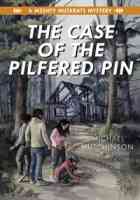
While not usually a mystery lover, I was so excited to get my hands on The Case of the Pilfered Pin by Misipawistik Cree First Nations author Michael Hutchinson, a finalist in this year’s Indigenous Writer category. This fifth addition to the Might Muskrat Mysteries series works well as both a sequel and a stand-alone story. The book follows the Mighty Muskrats (Sam, Otter, Atim, and Chickadee) as they track down a missing survey pin that proves where the (fictional) Windy Lake First Nation’s reserve land ends.
This book is so cute. I can absolutely imagine my nieces and nephews trying to solve mysteries just like the Muskrats. The mystery flows so well that I could not put the book down. It was gone in one sitting. The characters and environment are so well-written that I had no trouble immersing myself in the Windy Lake reserve. There is also a good blend of history that accompanies the mystery, which is unsurprising, given that part of Hutchinson’s intention in writing the series is to educate young people, especially in Canada. It is like the Muskrats are not just finding clues to solve the case but also finding pieces of their own First Nations history. And I cannot stress enough how cute it is! I am buying the rest of the series for my nieces and nephews so they can feel like Mighty Muskrats too!

BECOMING LITTLE SHELL: A LANDLESS INDIAN'S JOURNEY HOME has received many awards and is a finalist for the 2025 High Plains International Book Award in the Indigenous Writer category. Author Chris La Tray is a descendent of the Pembina Band of the Red River of the North and is now an enrolled member of the Little Shell Tribe of Chippewa Indians in Montana. A poet and storyteller, he has authored several books of poems and essays. He was Montana Poet Laureate for 2023–2025. This book is a detailed account of La Tray's search for his family origins. It involves a personal and social journey with travels, reading, and conversations with many authors, historians, contemporaries, elders, and activists.
Like many American youths, La Tray was interested in Indians and wanted to be one. As early as four years of age, he identified as Chippewa because his “grandmother said so.” In contrast, his father and grandfather denied Indian heritage. When he was 29, he attended his grandfather’s funeral, and in attendance were Indigenous relatives whom he had never met. La Tray embarked on a journey into the history of his family and of the Little Shell Chippewa Cree. He read books by what he terms “settler writers,” Indigenous writers including James Welch, Sherman Alexie, and Vine Deloria, and he references Indigenous television shows he watched. He traveled widely in the United States West and Midwest, including many Montana communities, as well as British Columbia. He encountered individuals of Little Shell ancestry, many his contemporaries. Gradually, he embraced his identity and eventually sought enrollment with the Little Shell Tribe.
In addition to autobiography, his ultimate focus is on the Little Shell Tribe of Chippewa. Known as “landless” Indians, they are concentrated around Great Falls, although many live throughout Montana. How they became “landless” (having no reservation) is a complex historical scenario, including a long struggle for federal recognition. Along the way, La Tray explores the history of U. S. Government policies toward Indigenous communities, colonialism, effects of treaties made and broken, dispossession of land and recognition, native blood quantum laws, racism, tribal membership enrollment, and contemporary reconnection with communities. He tells stories of the leader Little Shell, Indian women in the fur trade and the current issue of MMIW (Missing and Murdered Indigenous Women), the Hellgate Treaty of 1855, First Peoples Buffalo Jump, celebrations often called powwows, the official recognition of the Little Shell Tribe by the State of Montana in 2009, and Federal recognition status in 2019.
BECOMING LITTLE SHELL is a wonderfully complex, if somewhat rambling, memoir of “repatriation” with family and tribe, with many levels. It is a “must read” for anyone interested in a personal journey in the context of the complex history and current issues of all Indians, and especially the Little Shell Tribe of Chippewa Indians in Montana. The author concludes: “I have a responsibility to make sure all the stories related to this struggle are told.” His final sentence is: “And I am Little Shell.”
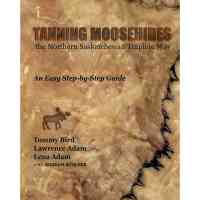
Tanning Moosehides: The Northern Saskatchewan Trapline Way, An Easy Step-by-Step Guide by Tommy Bird, Lawrence Adam, and Lena Adam (with Miriam Korner) is a finalist in the High Plains International Book Awards Indigenous Writer category.
The title says it all. One could actually do the task with this book in hand. Tanning was a critical skill passed down from generation to generation from a time when hide formed clothing, shelter, harnesses, snowshoe straps, and other items of survival. The authors of this book are carrying the skill forward and teaching others. Hides are still used to make traditional dress and moccasins. The arduous process requires a combination of traditional tools such as scrapers made from the back leg of a deer or bear. I did notice a piece of steel was used and modern tools were listed as an alternative. Small nod to this century.
The photographs show each part as one proceeds through building the frame to stretch the hide, removing the hair, scraping the flesh, making brain soup as a tanning agent, and smoking it. Along the way there is a lot of soaking and stretching. After each step, the book suggests the “tanner” keep notes of what to or not to do and asks that the knowledge be passed on. The book is easy to follow in part because it is devoid of sentiment, quips, and wisdom from the native people doing the work. But that in my mind also removes the essence of the process. While Korner has collaborated with elders and is attempting to learn traditional ways since migrating from Germany, the spirit of Bird, Adam, and Adam seems absent in the writing. I would have enjoyed - even expected - some stories from the People to add richness to the traditional heritage of tanning. However, it is truly a “Step-by-Step" guide, and from that point of view it does the job.
Nonfiction

Are you bird-curious but feel intimidated by thick field guides and other ornithological tomes? Never fear, Birding for Boomv, by award-winning author Sneed B. Collard III, is just the book for you. It is a delightful, accessible, and wonderfully instructive guide for novice birders as well as a finalist for the High Plains International Book Award for Nonfiction. Collard packs this little book with loads of useful information, explaining how to get started, what gear and tools you will need, and where you can go for a great experience. Good news for homebodies—you don’t even need to leave your own backyards if you don’t want to!
Keeping it lighthearted, Collard sweetens every page with his signature sense of humor. He also takes special care to show how birding can be accessible for those dealing with physical limitations. Hearing loss, eyesight issues, or just a “broken-down boomer bod” needn’t discourage potential enthusiasts. He wants his readers to know that birding can be a joyful activity for people of any age.
Although this book is ideal for the beginning birder, Collard wisely suspects that once you’re hooked, you’ll want to go to the next level, so he includes a section on building an “Advanced Birding Arsenal.” Here you’ll learn more about pricey spotting scopes, sophisticated ornithological Websites, and even the allure of bird photography. Happily, this book is not only informative but also eye-catching. Tanner Barkin’s whimsical illustrations bring delight to every page. Birding for Boomers is a handy, exuberant, good-humored introduction to the wonderful world of bird watching.
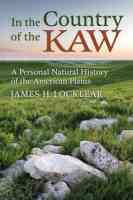
I’m a novel junky so when I read nonfiction for the High Plains International Book Awards, I am pleased to learn a lot about people and places in high plains regions. In the Country of the Kaw by James H. Locklear, a finalist in this year's Nonfiction category, was a real treat in this regard & more!
I was engaged and intrigued from the start. Locklear’s descriptions of geology, ecology and associated wildlife are so unique and lively that one just wants to take it all in. His perspectives on the history of the area, along with deep and insightful awareness of the impact of human progress, are elucidating and instructive but never without a positive approach. The book is organized in a very creative way, with interesting chapter titles and a small section of photos to highlight vistas, historical stone buildings, and some of the local plants and wildlife, including the spectacular Franklin gulls.
He delights rock lovers by including terminology such as lithophilia, and he describes artifacts of stone from prehistoric quarries that were carried by nomadic peoples from 12,700 to 13,250 years ago. The fascination Locklear experiences with his deep dives into the different subjects is contagious. We learn about the aquatic life through his inquires with fishery and stream biologists and a Kansas State University Professor specializing in Great Plains streams, particularly the Kansas River basin. Here he states that the ‘research papers are peppered with words like “degraded,” “highly endangered”, “alarming”, even “bleak.” Though he finishes that section with this statement: “But life endures even in the more altered parts of the Kaw and its tributaries, and that is a gift worth opening as well.” His bibliography is extensive and impressive, a wealth of knowledge explored and synthesized to bring to life the magic of this little-known area to entice the reader to appreciate and savor.
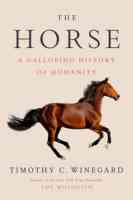
Timothy C. Winegard's The Horse: A Galloping History of Humanity is an epic history unlike any other. The story began more than 5,500 years ago on the windswept grasslands of the Eurasian Steppe; when one human tamed one horse. An unbreakable bond was forged and the future of humanity was instantly rewritten, placing the reins of destiny firmly in human hands. Since that pivotal day, the horse has carried the history of civilizations on its powerful back. For millennia it was the primary mode of transportation, an essential farming machine, a steadfast companion, and a formidable weapon of war. Possessing a unique combination of size, speed, strength, and stamina, the horse dominated every facet of human life and shaped the very scope of human ambition. Driven by fascinating revelations and fast-paced storytelling, The Horse is a riveting narrative of this noble animal's unrivaled and enduring reign across human history.
For most of us, horses are not part of our everyday, practical lives. We mostly know about horses through entertainment and recreation: racing, rodeos and equestrian competitions, television shows, and movies depicting bygone eras. Winegard examines the sweeping equine supremacy as our pivotal sidekick from all perspectives to demonstrate the profound historical impact of the horse on our global civilization. Horses revolutionized the way we hunted, traded, traveled, farmed, fought, worshipped, and interacted. They reshaped the human genome and the world's linguistic map. Horses determined international borders, molded cultures, fueled economies, and built global superpowers. They decided the destinies of conquerors and empires. The narrative explores the impact of horses on the spread of particular languages (Indo-European), migration (recent DNA findings have helped greatly with tracing large movements of particular populations), trade, governance (the rise of patriarchies, empires, wars of conquest), the military, and more. Within these discussions, Winegard discusses the ancient Assyrians, Scythians, Egyptians, Alexander the Great, the Persian Empire, and many more. Beyond Alexander, we get a back and forth description of the two great powers rising in the East and West—China and Rome—and how events in the former (the Mongols being driven out) greatly affected the end of the latter. Horses were both vectors of lethal disease and contributors to lifesaving medical innovations (e.g. DtAP vaccine). Horses inspired architecture, invention (e.g. stirrups for one), furniture, and fashion (e.g. pants).
Eventually we arrive at the horse’s reintroduction into its land of origin, via Columbus’ second trip to the New World in 1493. To make the loss not just in human life but also human civilization clearer, Winegard spends some time detailing the varied achievements of the Meso-American empires like the Incas and Aztecs. Winegard does a nice job of exploring how the introduction of the horse into native culture was a two-edged sword, distorting traditional boundaries and cultures, as well as throwing the ecological balance on the plains out of whack.
The Horse is a deeply informated work that does not focus so intensely on its subject that one loses sight of what is happening in the world/society outside that focus. Winegard expertly zooms out to present us a wider context and then zooms back in to show how the horse fits within that context. To know the horse is to understand the world.
Poetry
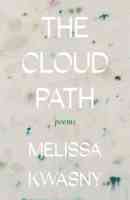
As a former poet laureate of Montana, Melissa Kwasny is familiar to many people, and her work includes not only poetry but also essays and full-length nonfiction. The Cloud Path, her seventh poetry collection, is a poetry finalist for the High Plains International Book Awards this year, and it is her most approachable book so far. Blending the familiar with the esoteric is a common theme throughout Kwasny’s work, and in this latest collection, she intermingles those elements like a consummate baker creating the perfect pastry, delicious because of its many layers.
A major over-arching theme Kwasny explores in The Cloud Path is grief, something familiar to everyone. In its various guises, it stalks us all, and these poems alternately dissect, lament, and observe the interplay of private losses with more broadly shared traumas like climate change. In “The First to Change,” the author’s dying mother “slips like the creek slips through the afternoon, each day quieter, more shallow.” Then later, in “The Prickly Pear Path,” we are reminded that “we borrow from Earth all the metaphors we will need.” Nature imagery abounds as the poems expand on singular moments – watching snow geese, walking amidst aspens, moving a stained-glass window – to meditate on fragility and resilience.
One quibble I consistently have with Kwasny’s poetry is that I find myself wanting a bibliography or “suggested reading” section at the end, so that I can follow up by exploring more of the authors Kwasny mentions. Virginia Woolf, Elizabeth Bishop, Plato, and Buson all make appearances on these pages, often in the form of “Buson wrote…,” and it is a testament to Kwasny’s skill that these inclusions meld seamlessly as part of her poems. Good poems act as conversation starters, and often Kwasny’s poems stimulate dialogue with the work of other authors. As the poems in this collection suggest, community and connection transcend grief.
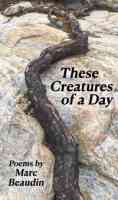
Marc Beaudin is one of Montana’s creative polymaths, a musician, bookseller, theater artist, publisher, and poet rolled into one, and the breadth of his creativity is on full display in THESE CREATURES OF A DAY, a finalist in the poetry category of the High Plains International Book Awards this year. True to the title, creatures of all kinds wander through the pages, but Beaudin imbues the gulls, elk, trout, and cephalopods with multiple layers, and readers of all types are likely to find something that speaks to them in these verses.
Those seeking nature poetry will find plenty to appreciate, but the strength of the collection lies in its philosophical meditation on the tangle of beauty and absurdity that makes life worth living. As Beaudin ranges widely, from Brautigan and Rachmaninov to Lao-Tzu and Patsy Cline, his restless energy infects the reader as we join him on a quest for the intangible – or, perhaps, a quest to fuse the tangible and intangible. Along the way, the author reminds us to look for beauty in unlikely places (one of this reviewer’s favorite animal-related similes, in “Prayer,” involves a toad, an earthworm, and a urinal) and to embrace humor as a mechanism for handling the inherent uncertainty that surrounds us.
For those familiar with Montana’s geography and the figures who have peopled the history of the arts in the state, the collection also offers plenty of references and Easter eggs. Those in the know will recognize the Sip ‘n Dip and immediately conjure in their minds the “Chathamesque vistas.” They will be able to smell the Mint Bar and The Murray, and they might even be able to hear Jim Harrison elucidating “’The Fly Test’ for writing poetry.” However, even those who do not know who Andrea and Doug are in “Digging Potatoes, 9 Variations” will follow the gleam of the potato moon as it shines through the poem. And, if you don’t know how potatoes and moons and Marie Antoinette are connected, you should probably read this book, with each page an elaboration on the collection's Aurelian title of hope amidst ephemerality.
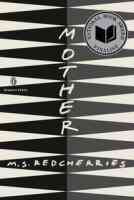
Poetry comes in a variety of forms, but what separates it from other genres is the quality of the language and the centrality of imagery. In her debut collection MOTHER, a poetry finalist for the High Plains International Book Awards, m. s. RedCherries exemplifies this differentiation. No two poems are structured the same way, with some reading initially more like flash fiction than poetry. However, linguistic precision coupled with rhythmic lyricism solidify this book's poetic bonafides.
For instance, RedCherries frequently uses repetition and recurring sounds to good effect, as in this stanza from "will we return?":
Pockets in a pouch for tobacco worn across my neck, pouches of dried meat palmed by my son beneath his clothes, pockets in my horse's pack, pockets in the coat that carried the sickness I can feel but cannot name, and I look up to ask my son, "do you think the horse can feel it too?"
RedCherries also expertly utilizes enjambment to both emphasize her thematic intentions and introduce ambiguity. In "July 1969," she uses it to separate Laika from her sacrifice, just as we tend to do when remembering the first living thing sent into space. In "thisiswhere," one of the last poems in the collection, enjambment highlights the systemic corrosion that underlies the social commentary at the heart of much of our best poetry:
she exists
and she does not
exist in one
sum of
america,
you've taken
more than you've given
Readers who enjoy narrative-style collections will appreciate the over-arching theme linking many of the poems, with an Indigenous woman adopted out to a White family acting as a primary voice throughout, exploring motherhood but also the nature of memory and identity. Despite the seemingly deeply personal nature of that narrative arc, though, RedCherries's skillful writing allows multiple levels of meaning, and systemic indictment is a throughline, as exemplified by the excerpt from "thisiswhere" above.
While some readers may find the differing formats throughout the collection challenging, the choice to mix styles keeps the reader off-kilter in a way that mirrors the primary voice of the collection and thus serves the narrative well. Hopefully RedCherries follows this debut with more work in the future, as this reviewer looks forward to seeing how this author develops.
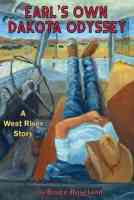
Bruce Roseland's EARL'S OWN DAKOTA ODYSSEY, a Poetry Finalist in the 2025 High Plains International Book Awards, was inspired by an Earl the author pulled out of a ditch one winter. They met ever so briefly, but what transpired reflected what Roseland, the rancher, knew of other men who had passed through his own life. Hard-working, low expectations, but with a freedom and attitude that comes from being on the land, caring for animals, and the hope that better is just down the road.
Earl’s journey is portrayed in free-verse style, and that works well for me as a reader and for this cowboy’s story. Bruce knows his man, who for the first part of his life goes along to get along. His odyssey begins with him “quitting school without a diploma and leaving town without a destination.”
The “West” was and is imagined to be one of adventure and bravery. Owen Wister’s THE VIRGINIAN imbued the cowboy with adventure, romance, a free spirit, and the qualities of a knight in buckskin. But Earl personifies the reality of a working cowboy. He learns his trade by doing, expecting nothing but two hots, a bunk, and a beer. No work, no comforts. Get hurt, tough luck. Old, move on down the road. His expectations are within his grasp simply with his labor. Earl’s life is not without complication. Roseland presents a dilemma that puts a twist in this cowboy’s path. There are lessons in this book about staying, when to leave, owning responsibility.
Roseland is a fourth-generation rancher and is South Dakota’s 8th poet laureate. The tale is about a chance encounter with “Earl,” but it is really a portrait of ranch hands the West over, whose employers couldn’t survive without them.
Short Stories
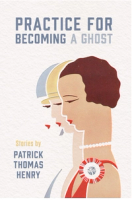
Patrick Thomas Henry’s story collection Practice for Becoming a Ghost, a finalist in the short story category of the High Plains International Book Awards, is an eclectic mix of the realistic and the fabulous. The writing is lush with description, particularly when he writes about the sky. There are themes of loss – loss of spouses and children, loss of jobs, loss of rural land threatened by gentrification, and loss of humanity as people turn into animals. One of my favorites is "Seven Flock the Transom: From the Wire Reports.” A writer at a failing online magazine writes articles about people turning into birds, which he describes in humorous detail, eventually...well, you'll have to read the story to find out the ending! Other stories are a bit creepy – in particular, one about a woman who has strange roommates and another about an encounter with a priest. An old hacksaw is referred to as “grandmother,” and her many woodworking projects are listed. “Self-Portrait with Windmill” is about a robotic painter, which I take to be a commentary on the growing AI trend. Henry may feel actual writers will soon be replaced by machines, as is already happening with college term papers. Overall, the stories are ironic, witty, and sometimes a bit chilling. Maybe this is what he means by the title, Practice for Becoming a Ghost.
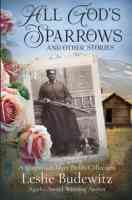
ALL GOD’S SPARROWS AND OTHER STORIES, a finalist in the Short Story category of this year’s High Plains International Book Awards, blends historical fiction with the suspense that author Leslie Budewitz is best known for. As the subtitle “A Stagecoach Mary Fields Collection” suggests, the three stories and one novella in the book center Mary Fields, one of Montana’s most interesting and enigmatic historical figures. With overlapping characters that link the narratives, each story imagines Mary as a kind of Father Brown character, addressing community problems and unraveling mysteries as she goes about her duties supporting the Ursuline mission outside Cascade, Montana. Unlike G. K. Chesterton’s unassuming protagonist, though, Budewitz’s Mary Fields is someone people notice, not only because of the color of her skin but also because of her natural presence.
Mary Fields is most celebrated for being the first Black woman engaged as a star route postal carrier, but she did not leave written records such as journals or letters. Nevertheless, Budewitz builds a believable persona from the scant information available, weaving in known details as she creates a compelling character. For instance, the most famous image of Mary – the one featured on the book’s cover – portrays her with one of her ubiquitous firearms and a dog by her side. Both the firearms and the dog make appearances in these pages, as Mary helps a variety of young women, including one unjustly accused of murder, and untangles dodgy land deals, all while delivering the mail. Mary is clearly the star of these stories, but the secondary characters are well-drawn, and the occasional shifts into their points of view serve the narrative arc appropriately.
While not a historian by training, Budewitz did extensive research for this project, and, at least to this geeky reviewer, one of the most interesting features of this slim volume is the “Historical Notes and Acknowledgements” chapter at the end of the book. Well-written historical fiction often runs the risk of embellishing the historical record in readers’ minds, and it is a testament to the author’s conscientiousness that she wants readers to know how much creative license she took while also providing us with a plethora of resources for further exploration of our own. It is a fitting coda to an enjoyable collection bringing Stagecoach Mary Fields to life.
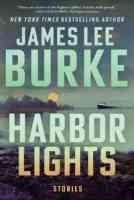
HARBOR LIGHTS by James Lee Burke, a finalist in this year's Short Stories category of the High Plains International Book Awards, collects 7 short stories and a novella. Exploring the recurring theme of humans mistreating other humans, these narratives often include overt violence and death but plumb psychological mistreatment as well. The author gives the characters (and readers) a way to wrestle with their own ethics, morality, and courage. While the stories are considered fiction, the writing is so adept that I kept wondering that surely the vignettes were based on true stories.
Two of the seven stories are set in Louisiana, and this is where the author really shines, with vivid descriptions of two-story, white-as-wedding-cake, antebellum houses, and moss hanging from cypress trees that sit in the brackish, slow-moving water of the swamp. The author takes the reader through the Louisiana Bayou, the Bayou Teche, and the Atchafalaya swamp.
The first Louisiana story "Harbor Lights" is set in 1942 and narrated by AaronBroussard, a young boy who is tagging along with his father to the oil fields. Set in New Iberia, Louisiana, during the middle of World War II, Aaron witnesses deathand carnage when the Germans sink a U.S. freighter off the coast. Shadowy quasi-law enforcement descends on New Iberia looking for communist sympathizers and, with dubious evidence, snares a friend of the Broussards.
The second Louisiana story is "Strange Cargo," also narrated by Aaron Broussard; however, now he is of retirement age. Aaron has returned to New Iberia and lives in the old family home on the coast, where years ago the pirate, Jean Lafitte (a real historical pirate), would anchor his boats and come ashore to sell his cargo of stolen goods and kidnapped slaves. Aaron wrestles with his family’s past relationship with slavery. He also struggles with his own mortality, as he has cancer, and he tries to belatedly come to terms with the fractured relationship he had with his deceased daughter.
The other stories tackle similarly grim narratives, but the complexity of the characters' journeys and the evocative imagery that are signatures of Burke's style will likely delight not only his many existing fans but also new readers as well.
Woman Writer
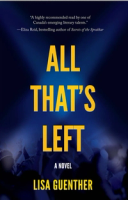
The heart of the author pours through the pages of ALL THAT'S LEFT, a finalists in the Woman Writer category of the High Plains International Book Awards. It is an emotional ride through tragedy and new life, and Lisa Guenther ties together an amazing story with complex characters, each uniquely fashioned to draw in every type of reader. One thing I enjoy doing is taking on the life of a character within a book. It helps me to embrace the author, the story, and the cast individually while sharing in the story collectively. Guenther makes that easy.
Having lived through tragic events myself, I was captivated from the start. I shared emotions with each character and had moments where I was able to reflect, remember, and heal. The narrative also capitvated me by illustrating the human mind and its differing ways of dealing with trauma and adversity. I also appreciated the central theme that we can learn a lot from each other if we will take the time to listen.
Being a fan of music and lyrics, I also enjoyed how this book brought home for me a great joy and pastime, rendering melody within my mind. One particular lyric shared by the main character Darby, sparked deep self reflection: “Worry keeps her awake through the night, Tugs at her sleeve all through the day, Sometimes she wishes she could take flight, But she’ll wait until she gets to the other side.”
ALL THAT'S LEFT is a heartfelt book of tragedy and healing through life and friendships...even those with four-legged friends. In the end my heart was touched, bruised, and healed. I have already shared this recommendations with friends and family: “You need to read ALL THAT'S LEFT...you’ll laugh, cry and sing long!"
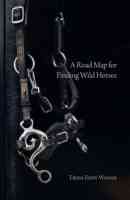
A ROAD MAP FOR FINDING WILD HORSES by Trisia Eddy Woods ended up being a road map for me to find myself. Amidst bleakness, this finalist in the Woman Writer category of the High Plains International Book Awards brought color and life back into my being. At this moment in time, I really needed to read something like this, a book that stirred all my senses.
The way Woods expresses herself makes me not only see but also feel the world as she does, the mark of a good poet’s adroit grasp of language. She shares the world as she sees it through her eyes and, at times, through her camera, and as a fellow photographer, I particularly appreciated those allusions. For instance, in “Depth of Field,” she says, “If you move your body, you can capture the light as it shatters.” Throughout the collection, such multilayered meaning allows the reader to luxuriate in single lines as well as entire poems.
Sometimes it felt like the more expository poems might have been better-placed earlier in their sections, but every reader instills their own rhythm into how they experience poetry, and others may prefer the order as it is. Overall, Woods's first full-length poetry collection is both beautiful and approachable, and I look forward to the next one.
Young Adult

Tristan & Lancelot: A Tale of Two Knights by James Persichetti with art by L. S. Biehler is a finalist in the Young Adult category of this year’s High Plains International Book Awards. Telling the story in the graphic novel format is a perfect complement to the setting within the world of Arthurian legend, a myth we all know so well. In this version, Merlin goes missing, and King Arthur calls upon a gifted magician to help locate and return him to Camelot. This magician is his sister Morgan le Fey, and she once trained with Merlin. Arthur tasks Morgan with finding him because his aid is necessary to save Camelot from a horde of brutish creatures wreaking havoc. Morgan agrees but is saddled with two Knights of the Round Table, Sir Lancelot and Tristan. Although the quest involves plenty of swordplay and magic, the secrets these two knights hold drive the heart of the narrative.
By combining the hero’s journey with a coming-of-age tale, James Persichetti has given readers a graphic novel that depicts the true meaning of friendship and trust, with quick-witted, refreshing characters who tease each other as much as they support each other. The characters are complicated enough that their journey convinces readers that individuals are capable of more than they believe, as long as they stay true to their values, including the core value of honoring close relationships. Queer storylines are woven throughout the narrative in believable ways that are appropriate both for the depicted time period and the core YA audience, and the illustrations from L.S. Biehler are nothing less than spectacular. Although the book is already dense, one improvement could have been more full-page spreads from Biehler. I hope James has more stories to tell us.
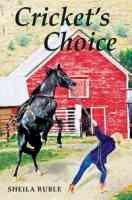
I loved Cricket’s Choice by Sheila Ruble, a finalist in this year's Young Adult category of the High Plains International Book Awards. It is the second of two books that feature 13-year-old Cricket O’Conner and her oddly named horse, Gonna Be. The earlier book is Fire Pony, which I also loved. Sheila has been writing for children for many years and understands the authenticity it takes to reach that audience. I spent decades living and working in eastern Montana, so when I read about Cricket and her family, I recognized that they are the real thing. The characters and settings are so well-described that I could easily imagine myself at the O’Conner place, visiting with her parents while watching Cricket work with her horses. Additionally, as a school psychologist, I am happy that Cricket has supportive adults and family around her because life gives her plenty of challenges.
In Fire Pony, Cricket and Gonna Be survive a life-threatening trauma. In Cricket’s Choice, we see the emotional consequences that haunt her from then on. In this, the author gives us a good portrayal of post-traumatic stress syndrome as we might see it in children. Cricket falls apart, and even Gonna Be has his problems. From the beginning, they don’t get along, but the arc of their joint healing is the heart of the book. One of the unexpected things about Fire Pony and Cricket’s Choice, written for older children and early teens, is that adults like them, too. I have always felt that a great book for children can be a great book for all ages, and these books hit that mark, relating a compelling story that works on many levels.
Importantly, Sheila Ruble is the right person to write this book. She is an expert animal trainer and has a lifetime’s worth of experience working with children through 4-H. The book itself is beautifully typeset and features well-done illustrations. If, like me, you enjoy stories about coming of age, then you want this book. (Cricket’s Choice can be understood without reading Fire Pony.)
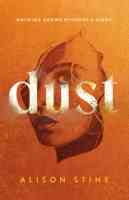
Written as coming-of-age, speculative fiction, Alison Stine’s young adult debut DUST has left me pondering the true meaning of bravery. This finalist for the 2025 High Plains International Book Awards in the Young Adult category is set in an all-too-near dystopian future. The world has turned to dust. Or that’s what it feels like to Thea after her move to the Bloodless Valley of southern Colorado. Originally from the east coast, her family makes the big move because Thea’s father stumbles across old texts describing what life was like during the time of the pioneers. Slowly he incorporate ideas from these books into their lives.
First, her father pulls her out of school. Then Thea has to start wearing dresses covering her from wrist to ankle, with household duties falling on the women of the family. Her father believes that if their family reverts back to traditional practices and beliefs, they will finally be happy. Hoping to facilitate achieving this ideal life, he relocates the family to a foreclosed farm, a move not dissimilar to that of the pioneers he has read about.
Isolated from the rest of the world under the rule of her father’s oppressive beliefs, Thea is utterly alone...until she meets Ray. More important than the companionship, Ray is deaf just like Thea. After struggling her whole life to hear and be heard, Thea’s friendship with Ray is a release of a breath that she didn’t know she had been holding, and the disability inclusion not only feels organic but adds depth to the common YA theme of struggling to both fit in and be one's own person.
Meanwhile, severe dust storms not only strain Thea's family relationships but also mirror her own inner turmoil as she struggles with the run-of-the-mill identity questions every young person has. The narrative centers human connection in believable and meaningful ways, though, highlighting that courage includes empathy and not just physical bravery. DUST is a story that has stayed with me long after I finished the last page.
